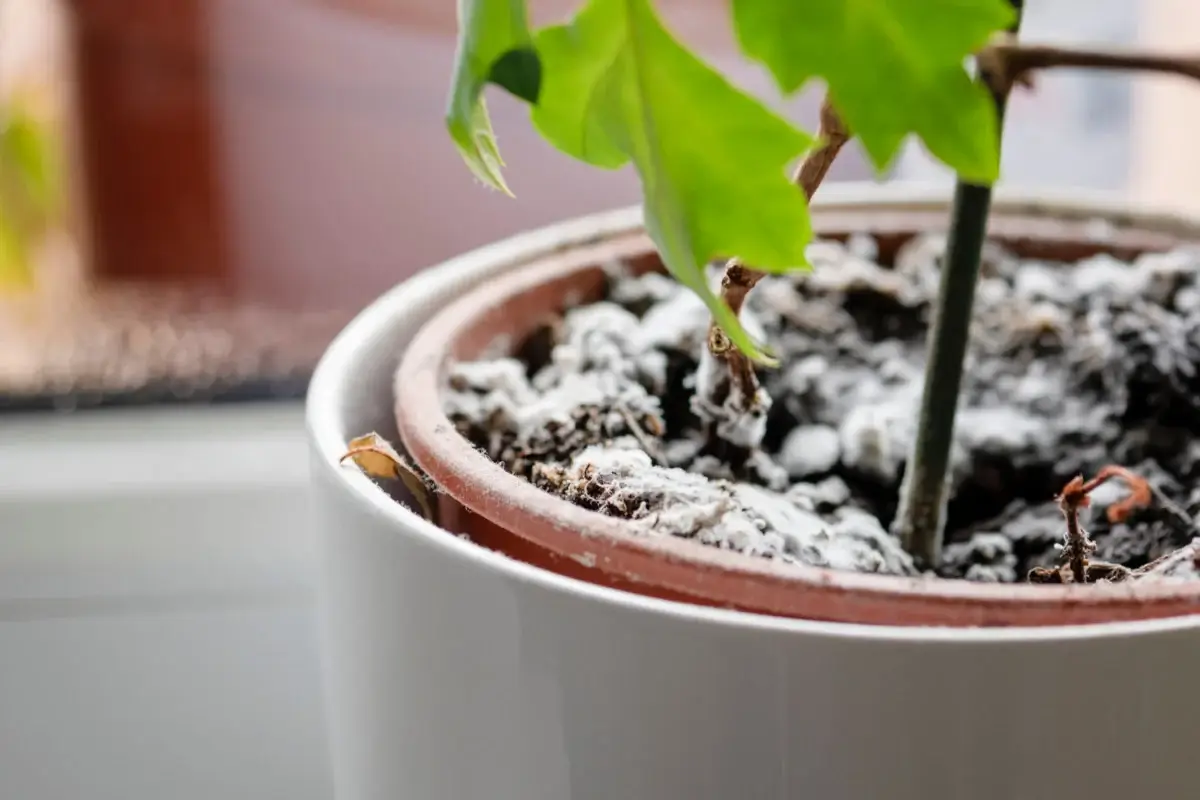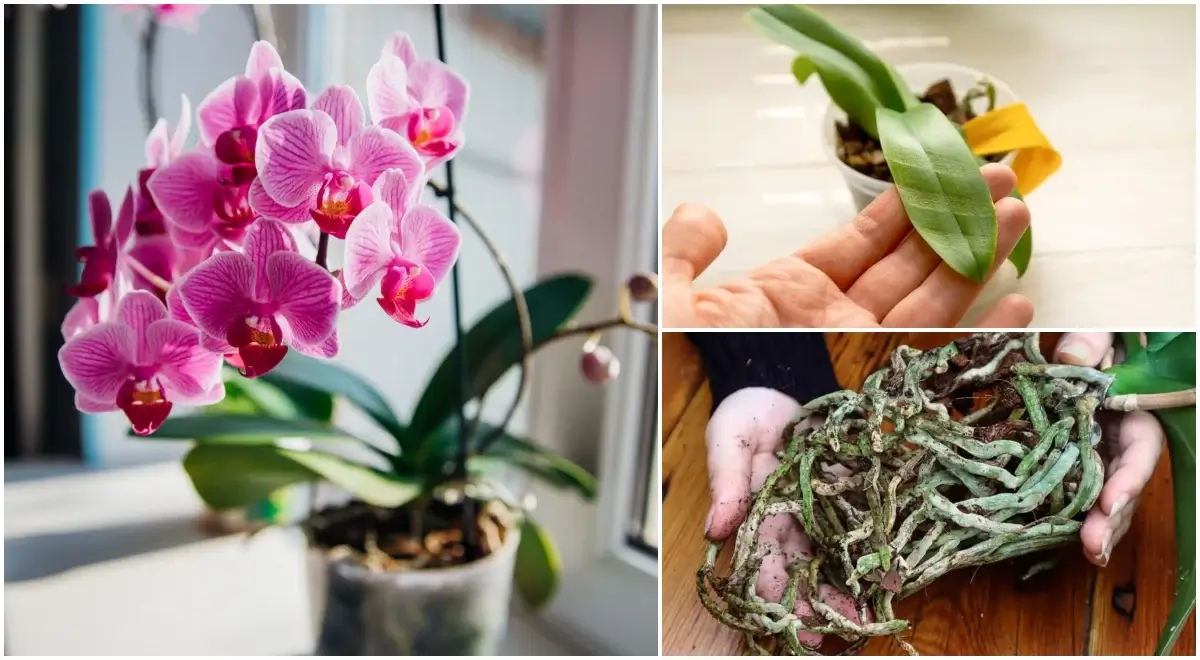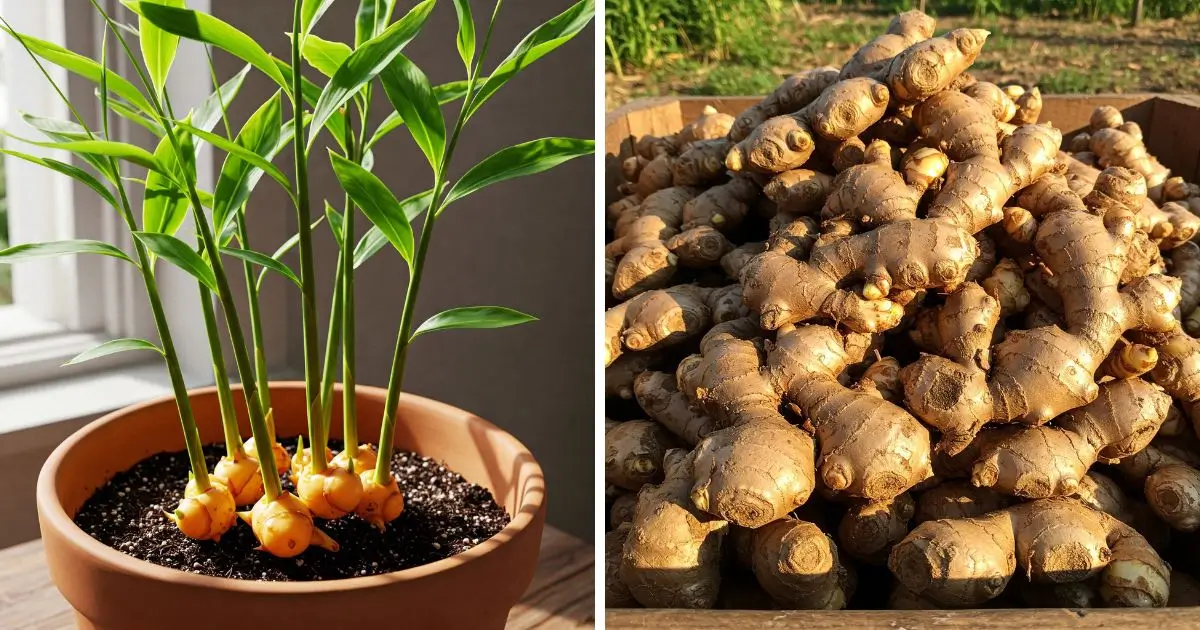If you’ve spotted fuzzy white patches or a powdery coating on the soil of your houseplants, don’t panic. That white mold is usually a saprophytic fungus—a harmless type of fungus that feeds on decaying organic matter. While it’s not directly dangerous to your plant, it’s a clear sign that the environment is too damp, poorly ventilated, or lacking light.
By adjusting a few growing conditions, you can easily get rid of it and prevent it from coming back.
What Causes White Mold to Appear?
White mold thrives when moisture, organic matter, and still air combine. Here are the most common causes:
1. Overwatering
When soil stays wet for too long, oxygen levels drop, creating the perfect place for mold to grow.
2. Poor Drainage
If the pot doesn’t have enough drainage holes or the soil mix is too dense, water can’t escape, keeping the roots and soil constantly damp.
3. High Humidity
Very humid environments—especially in winter—encourage mold to develop on the soil’s surface.
4. Low Light
Without enough light, soil dries more slowly, giving mold time to grow.
5. Decaying Plant Material
Fallen leaves, petals, or bits of bark left on the soil can serve as food for fungus.
Is White Mold Harmful to Your Plant?
Usually, no. Saprophytic mold doesn’t attack live plant tissue—it breaks down organic material instead. However, it’s a warning sign that your plant’s environment is too damp. If left unchecked, those same conditions can lead to root rot or invite pests like fungus gnats.
How to Get Rid of White Mold on Houseplant Soil
Follow these simple steps to remove the mold and stop it from spreading.
Step 1: Let the Soil Dry Out
Stop watering for a few days. Allowing the top layer of soil to dry will make it harder for mold to survive.
Step 2: Remove the Mold
Use a spoon or a small garden tool to gently scrape away the top layer of affected soil. Dispose of it in the trash, not your compost.
Step 3: Add a Natural Antifungal
Lightly sprinkle a bit of cinnamon powder over the cleaned surface—it’s a natural antifungal that helps keep mold at bay.
Step 4: Improve Air Circulation
Move your plant to a brighter, well-ventilated area. Even a small fan or an open window can help prevent mold from forming again.
Step 5: Adjust Your Watering Routine
Only water when the top inch of soil feels dry to the touch. Make sure your pot drains properly, and never leave water sitting in the saucer.
How to Prevent Mold from Coming Back
Prevention is much easier than constant cleanup. Keep these habits in mind:
- Use well-draining soil. Add perlite, orchid bark, or sand for better airflow.
- Choose the right pot. Make sure it has drainage holes to release excess water.
- Empty drip trays. Never let your plant sit in standing water.
- Increase airflow. Use a gentle fan or occasionally move plants to an airy spot.
- Clean up debris. Remove any dead leaves or plant material from the surface.
- Avoid over-fertilizing. Extra nutrients can fuel mold growth when the soil is moist.
When It’s Time to Repot
If mold keeps coming back or covers a large portion of the soil, it’s best to repot your plant entirely.
- Gently remove the plant and shake off the old soil.
- Trim away any roots that look black or mushy.
- Replant it in a clean pot with fresh, sterile potting mix.
- Water lightly and place it in bright, indirect light.
Repotting gives your plant a clean start and restores healthy soil conditions.
Final Thoughts
White mold on your houseplant’s soil might look worrying, but it’s more of a warning than a real threat. It simply means your plant needs drier, cleaner, and better-aerated conditions.
With a few small changes—watering less often, boosting light and airflow, and keeping the soil surface clean—you’ll stop mold in its tracks and help your plants thrive.
Take a quick look at your houseplants today. If you spot any mold, follow these steps to refresh their soil and bring them back to their healthiest, happiest state!



